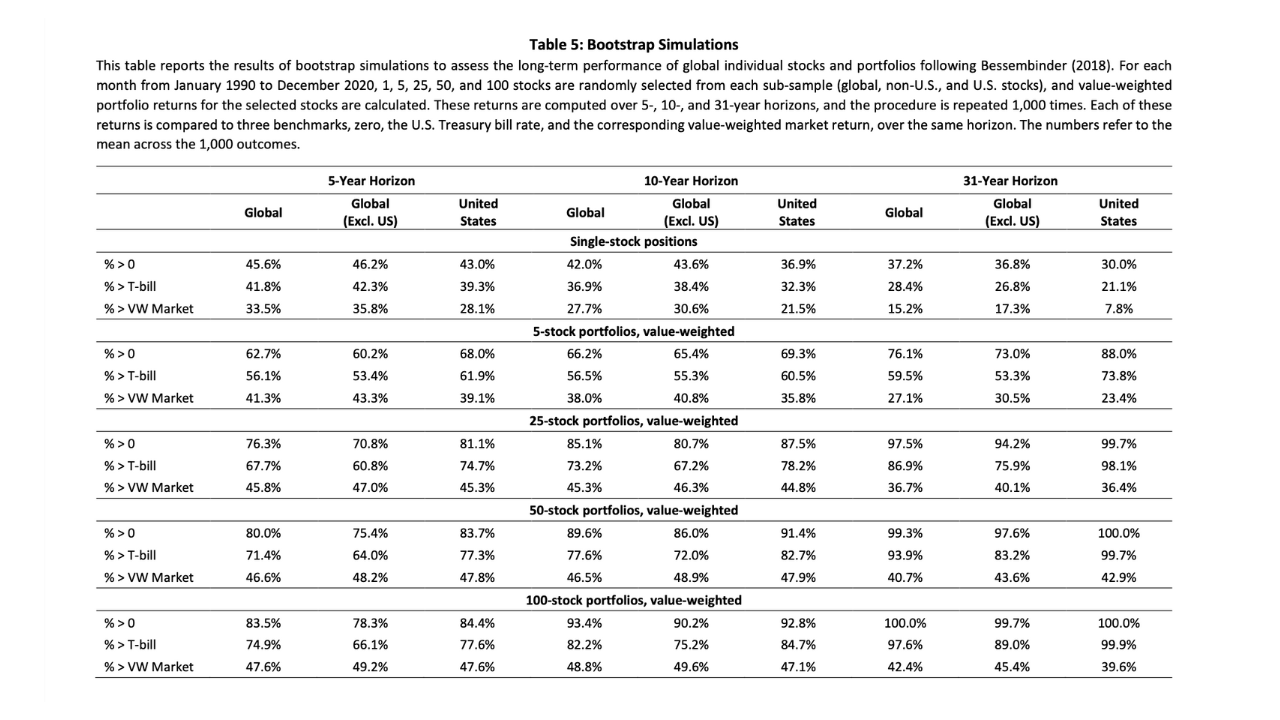A groundbreaking study by Hendrik Bessembinder analyzed nearly a century of U.S. equity market data and found a startling conclusion: most stocks do not beat Treasury bills over their lifetimes. Instead, the majority of long-term wealth creation comes from a remarkably small number of “superstar” stocks. Out of more than 64,000 individual equities studied across global markets, only about 4% accounted for all of the net wealth generated.
Why It Matters
This concentration of returns challenges conventional notions of diversification and stock-picking. For investors, it underscores both the power — and the peril — of equity markets. Missing out on just a handful of winners can mean underperformance, while exposure to broad indices ensures participation in those rare compounding machines.
Investor Implications
- Index Funds vs. Active Management: The findings validate the case for index funds, which systematically capture top performers, while active managers risk missing them.
- Portfolio Concentration: Holding a small basket of individual names increases the probability of underperformance relative to the market. The odds of randomly selecting the next Amazon or Apple are slim.
- Wealth Inequality in Equities: Just as wealth is concentrated among households, market wealth is concentrated among a small set of firms — often those with durable competitive advantages and network effects.
Risk Assessment
- Overconfidence Bias: Investors often believe they can identify winners, but the data show how rare true outperformance is. This creates behavioral risks of chasing narratives or overtrading.
- Sector Biases: Certain industries (tech, healthcare) have historically produced more “superstar” firms. Concentration in the wrong sector may leave portfolios exposed.
- Survivorship Risk: Many firms disappear entirely over time. Delistings, bankruptcies, or acquisitions mean investors may underestimate how often equities fail.
Portfolio Positioning
- Broad Diversification – Use index ETFs or mutual funds to ensure exposure to potential winners without relying on chance.
- Barbell Approach – Combine broad market exposure with a smaller, high-conviction allocation to innovative sectors (AI, clean energy, biotech) where future superstars may emerge.
- Long-Term Horizon – The compounding effect of outliers takes decades. Investors who stay invested through cycles maximize their odds of capturing these rare winners.
The Bigger Picture
The “64,000-stock” lesson is simple but profound: equity wealth is created by the few, not the many. For long-term investors, the challenge is not in picking every winner but in structuring portfolios to ensure they don’t miss them altogether. The data makes a powerful case for systematic exposure to the broad market, disciplined diversification, and patience. In the end, capturing just a fraction of those superstar stocks can transform a portfolio’s trajectory across decades.
Sources
- Bessembinder, Hendrik. Do Stocks Outperform Treasury Bills? (Arizona State University, 2018; global update 2023)
- Center for Research in Security Prices (CRSP)
- S&P Dow Jones Indices, Index vs. Active Scorecard (SPIVA)
- CFA Institute, The Case for Diversification in Equity Investing
- Morningstar, Wealth Concentration in Equity Markets

